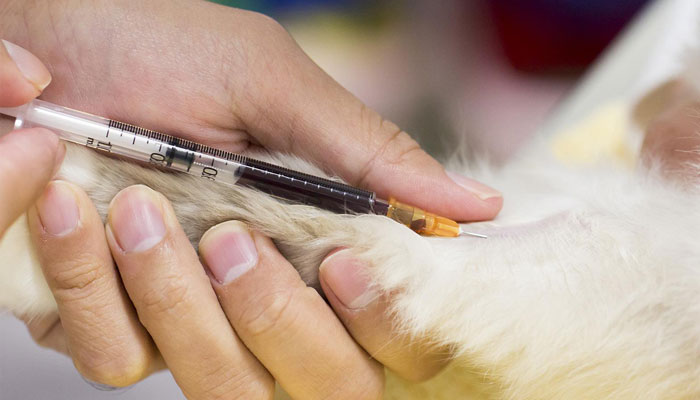The Past and Present of Canine Heartworm
I. Basic Characteristics and Hazards of Canine Heartworm (Dirofilaria immitis)
Canine heartworm (Dirofilaria immitis) is a parasitic nematode transmitted through mosquito bites. Mosquitoes carrying the pathogen transmit it to the host via their bites. Dogs serve as the primary host for this parasite, though cats, wolves, coyotes, foxes, and other animals may also become infected. In rare cases, human infections have been documented; however, humans do not develop microfilariae in the bloodstream and thus cannot act as intermediate hosts for this parasite.
When dogs, cats, or other animals contract heartworm, the parasites infest their hearts, lungs, and associated blood vessels, causing severe disease that can be fatal. From a treatment perspective, even with medication, the damage heartworms inflict on a dog’s cardiovascular system is irreversible. For cats infected with heartworm, no safe and effective treatment has yet been established.
Following infection, animals experience a “symptom-free window”—it takes over six months for infected individuals to exhibit noticeable symptoms, and microfilariae are only produced once female worms reach maturity. Based on this characteristic, if microfilariae are detected in puppies under six months old, it is typically due to transplacental infection, and puppies at this stage generally do not show obvious signs of illness.
II. Life Cycle of Heartworm
Heartworm transmission and reproduction follow a specific life cycle, entirely dependent on interactions between mosquitoes and hosts. Key stages include:
1. When a mosquito bites an infected host, it ingests microfilariae (the first-stage larvae, abbreviated as L1) from the host’s bloodstream.
2. Within the mosquito, L1 undergoes two molts and develops into infective third-stage larvae (L3) over 2-3 weeks.
3. When a mosquito carrying L3 bites another animal, the L3 enters the new host’s body during the bite;
4. After entering the new host, the L3 develops within the subcutaneous tissue for 1-3 days, molting into the fourth-stage larva (L4). The L4 then continues migrating within the host and further develops into the fifth-stage larva (L5);
5. Approximately 70 days after infection, immature parasites begin migrating toward the host’s heart, ultimately reaching the cardiac region;
6. Immature worms reaching the heart complete their development in the terminal pulmonary arteries, maturing into sexually mature adults. Mature males and females mate, producing new microfilariae (L1). These newly generated L1 enter the host’s bloodstream—typically detectable in infected animals’ blood approximately 6 months post-infection;
7. When mosquitoes bite infected animals harboring microfilariae, the larvae enter the mosquito’s body, initiating a new cycle of development and transmission that perpetuates the heartworm infection cycle.
III. Preventive Medication Regimens for Heartworm
The primary approach to heartworm prevention involves regular administration of macrolide drugs. These medications kill any existing microfilariae within the host, preventing their maturation into adult worms and thereby averting disease onset. Common preventive medications and related information are as follows:
Ivermectin: Common brand name Heartgard®;
Selamectin: Common brand name Revolution;
Moxidectin: Common brand name Advocate;
Moxidectin: Common brand names Heartgard Plus, Heartgard.
These medications are available in oral tablets and topical spot-on solutions. Dosage is determined by the pet’s weight, with administration required monthly. Key considerations during treatment include: Some oral medications contain beef flavorings to improve palatability. If your pet is allergic to beef, switch to topical spot-on treatments. Consult your local veterinarian for specific medication adjustments. Additionally, these medications are not solely targeted at heartworms; some also provide protection against fleas, intestinal roundworms, mites, and other parasites. However, the scope of protection varies by formulation. For detailed information, consult your veterinarian or refer to reputable online sources.
admin
-
Sale!

Washable Pet Cooling Pad for Cats and Dogs
$10.99Original price was: $10.99.$9.99Current price is: $9.99. This product has multiple variants. The options may be chosen on the product page -
Sale!

Washable Cat Window Hammock Cooling Bed
$23.99Original price was: $23.99.$22.99Current price is: $22.99. -
Sale!

Tropical Amphibian Rainforest Tank, Lizard Cage
$38.99Original price was: $38.99.$36.99Current price is: $36.99. -
Sale!

Silent 4-in-1 Waterproof Charging Dog Hair Trimmer
$49.88Original price was: $49.88.$47.99Current price is: $47.99.
